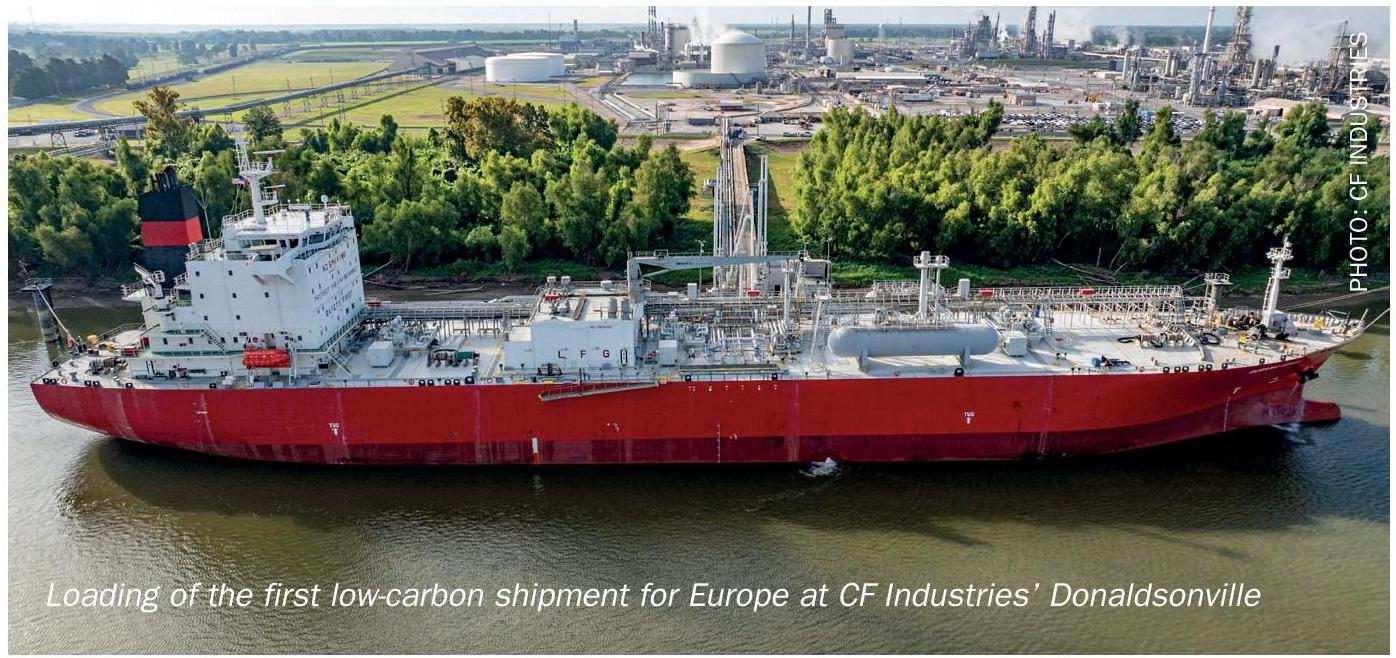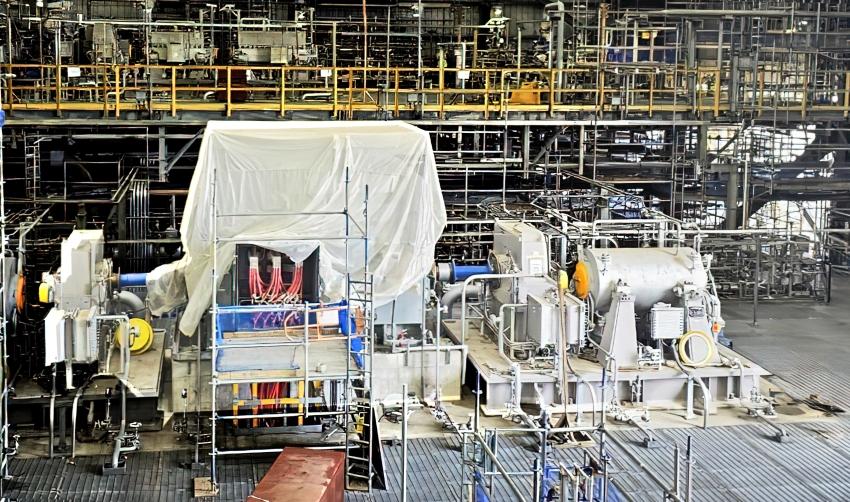Fertilizer International 520 May-Jun 2024

31 May 2024
The recovery of valuable sulphur fertilizers from wastewater and biogas
COMPANY PROFILE
The recovery of valuable sulphur fertilizers from wastewater and biogas
Sulphur is a necessary nutrient for strong and healthy plant-growth and disease resistance. Fertipaq manufactures the liquid suspension fertilizer S-600 using sulphur recovered wastewater and biogas streams. This organic product is an ideal nutrient source for crops with a high sulphur requirement.

Introduction
Sulphur is an element consumed at a large scale by many different sectors, including agriculture, the chemical industry, and cosmetics and pharmaceuticals manufacturers. Currently, more than 80 percent of the world’s sulphur supply comes from the desulphurisation of crude oil and natural gas. Yet some studies are predicting a shortage of sulphur as soon as 2040, as the world moves away from fossil fuels as part of the energy transition. Because of this, recovering elemental sulphur from sources that are not reliant on fossil fuels – such as wastewater and biogas streams – looks set to become an increasingly important and more sustainable source of sulphur in future.
From wastewater to organic fertilizer
Fertipaq recovers, stabilises and reuses the organic sulphur generated by THIOPAQ® biogas desulphurisation units installed at industrial sites. THIOPAQ® technology was developed by Paques – the parent company of Fertipaq – in collaboration with universities, research institutes and several industry customers. It can be used to remove hydrogen sulphide gas (H2 S) from a wide range of biogas streams and is compatible with all biological anaerobic systems installed by Paques.
Biogas is an important renewable energy source. However, the H2 S present in the biogas generated by anaerobic digestion plants, anaerobic wastewater treatment plants and landfill sites needs to be removed. This is due to health, safety and environmental reasons – and because of the corrosion of equipment such as gas engines, boilers and piping.
The Fertipaq story begin in 2014 with an in-house innovation competition from Paques, a Netherlands-based company specialising in wastewater treatment. Employees were invited to submit novel commercial ideas for a business start-up.
Fertipaq turned from an idea into a fact when employee Leo Habets won this competition. His innovative proposal was for a new business, Fertipaq, to start where Paques stops – and close the recovery cycle by turning previously wasted sulphur into a high-value fertilizer.
How THIOPAQ® works
THIOPAQ® scrubbers remove hydrogen sulphide using a continuously biologically regenerated caustic solution. Within the scrubber, a biogas stream containing H2 S is brought into contact with a wash solution flowing in counter-current. This enables the absorption of H2 S under slightly alkaline conditions (pH 8-9) via a biochemical reaction with hydroxide ions. The captured sulphide is then oxidised into elemental sulphur by autotrophic sulfidogenic bacteria using a bioreactor.
Previously, H2 S-rich biogas was burnt off resulting in acid rain. While this can be partly beneficial from an agriculture point of view – due to the soil deposition of sulphur (see article on p20) – combustion was banned because of human respiratory problems and the large-scale forest die-off associated with acid rain.
Avoiding atmospheric pollution, by installing desulphurisation units worldwide to remove H2 S from biogas, is now also good news for farmers. Recovering sulphur in this way and turning it into a liquid fertilizer allows much more precise sulphur fertilization of crops – without the damaging environmental and health impacts caused by acid rain. Applying sulphur fertilizers to crops also has dual benefits by promoting the nitrogen uptake necessary for strong crop growth and high yields.
Practical crop benefits of Fertipaq S-600 fertilizer
The thinness of the crop, poor nitrogen availability and wet weather were all major concerns for wheat growers in the Netherlands during spring 2023. Fertipaq’s distributors responded by advising the spraying of Fertipaq S-600 – both as a sulphur fertilizer and to boost nitrogen availability.
The subsequent application of Fertipaq S-600 to the wheat crop started to deliver satisfactory results for growers in the Netherlands as the 2023 season progressed.
“The plant was really not thriving. Furthermore, the levels of nutrients from the cattle manure were disappointing – so, we had to look at an alternative to make the nitrogen available,” a Dutch farmer told Fertipaq. “We started spraying Fertipaq S-600 in April, it would have been the second node, applying three litres per hectare. Faced by both wet and cold conditions at tillering, you know sulphur helps with these problems.”

QUICK FACTS ABOUT THIOPAQ®
- More than 30 years of operational experience
- More than 300 THIOPAQ® references worldwide
- Developed via continuous innovation
- In-house manufacturing and quality control
- Thorough hydrogen sulphide (H2 S) removal
- Production of high-quality elemental sulphur suitable for fertilizer use.
Fertipaq S-600 can be easily blended with other nutrients in the spray tank, although Fertipaq does recommend adding the product last. Fertipaq can be mixed at a ratio of between 1:50 and 1:100, depending on the sulphur needs of the crop.
As is usual with other products, farmers will need to inspect and maintain the spray tank and spray nozzles after field spraying to prevent residue build up and clogging.
Making Fertipaq S-600 part of the fertilizer plan
Fertipaq S-600 is not a replacement for the granular sulphate-enriched calcium ammonium nitrate (CAN) commonly applied on grassland and arable crops in northern Europe. Instead, it offers supplementary additional sulphur during the growing season. Depending on the crop, S-600 can be sprayed up to 4-5 times at 3 l/ha concentration during the season (Table 1). For wheat, this fits in well with the usual spray regime, with growers typically spraying the crop once in the fall, once in the spring, twice during the growth regulation stage, and possibly one final time at the flag leaf stage.

There are indirect benefits too. Although Fertipaq is not a fungicide, and is not certified as such, there is evidence that adding it to a fertilizer plan helps plants flourish and creates a more robust and resistant crop.
Biologically-recovered vs chemically-derived sulphur
Fertipaq S-600 has a number of advantages compared to chemically-derived sulphur. The form of elemental sulphur present is naturally hydrophilic, for example, and therefore easy to disperse in water. Chemically-derived sulphur, in contrast, is hydrophobic, this making extra steps necessary to turn it into a hydrophilic liquid product. The naturally small particle size of the biologically-recovered sulphur in S-600 (5-20 microns) is another advantage – compared to the larger particle size of chemical sulphur (typically >50 microns) – as these are more easily dispersed in soil and therefore more uniformly available for uptake by the crop.






